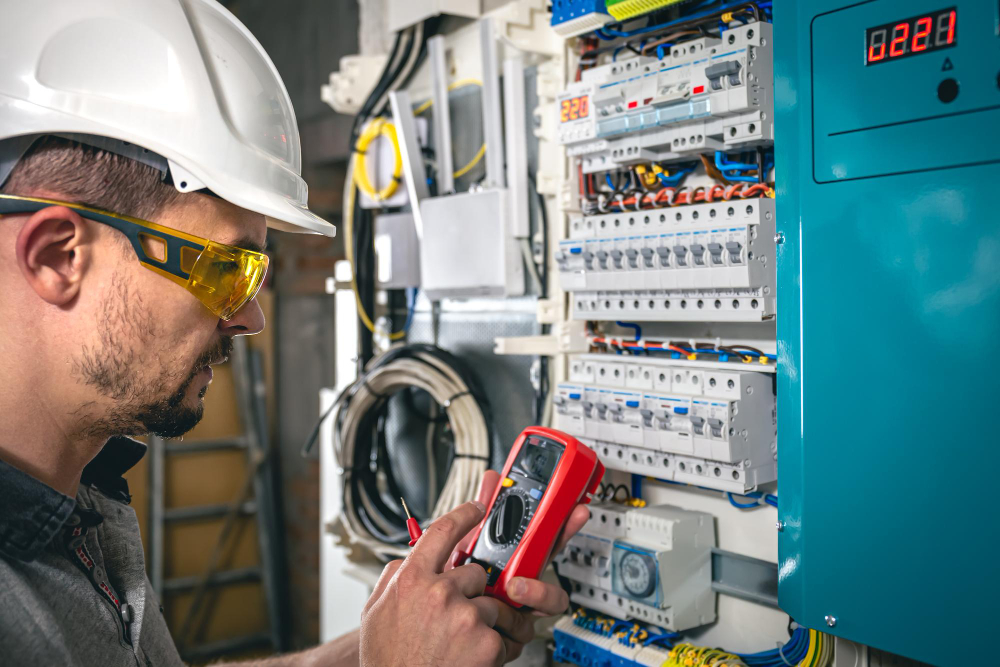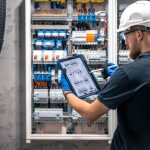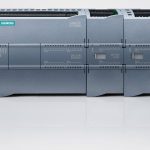PLC (Programmable Logic Controller) programming is the process of creating a set of instructions that guide a PLC on how to perform a specific task or control a particular process. PLCs are widely used in industrial automation to control machinery, processes, and other applications. PLCs support multiple programming languages, each suited for different applications.
PLC Programming
Programmable Logic Controllers (PLCs) are the major components in industrial automation and control systems. The controlling nature of PLC ranges from simple- push-button switching to a single motor to several complex control structures. PLC programming is an important task of designing and implementing control applications depending on customers’ needs. A PLC program consists of a set of instructions either in textual or graphical form, which represents the logic to be implemented for specific industrial real-time applications.
A dedicated PLC programming software comes from the PLC hardware of a specific manufacturer that allows entry and development of user application code, which can be finally downloaded to the PLC hardware. This software also ensures Human Machine Interface (HMI) as a graphical representation of variables. Once this program gets downloaded to the PLC and if the PLC is placed in Run mode, then the PLC continuously works according to the program. Before going to the program of the PLC, go through the basics of the PLC programming tutorial and its basic concepts.

The most common languages include:
Ladder Logic: Ladder Logic is a graphical programming language commonly used in PLC (Programmable Logic Controller) programming. It draws its name from its visual resemblance to electrical relay ladder diagrams. Ladder Logic is designed to represent logical control circuits in a way that is easily understandable for engineers and technicians with a background in electrical control systems.
Function Block Diagrams (FBD): FBD provides a visual representation of a control system through the use of interconnected function blocks, offering a different approach compared to languages like Ladder Logic.
Structured Text: Structured Text is a text-based language that resembles traditional programming languages like Pascal or C.
Sequential Function Charts (SFC): It provides a visual representation of the sequential control of a process, making it particularly suitable for applications where operations follow a predefined sequence.
Learning PLC Programming
Learning Programmable Logic Controller (PLC) programming involves acquiring knowledge and skills related to industrial automation and control systems. Here’s a step-by-step guide to help you get started:
Understand the Basics:
- Familiarize yourself with basic electrical concepts, circuits, and industrial control systems.
- Learn about sensors, actuators, and other devices commonly used in industrial automation.
Get Familiar with PLC Hardware:
- Study different PLC models and their specifications.
- Understand the various components of a PLC system, such as the CPU, input/output modules, power supply, and communication ports.
Learn PLC Programming Languages:
- PLCs use various programming languages. The most common ones include ladder logic, structured text, function block diagrams, and sequential function charts.
- Start with ladder logic, as it is the most widely used and is relatively easy to understand for beginners.
Choose a PLC Platform:
- Select a specific PLC platform to focus on. Popular brands include Siemens, Allen-Bradley (Rockwell Automation), Mitsubishi, Omron, and others.
- Download the necessary software for programming the chosen PLC.
Acquire Programming Software:
- PLC programming is typically done using specialized software provided by the PLC manufacturer. Install the programming environment on your computer.
- Explore the software interface and features.
Study Documentation and Manuals:
- Read the user manuals and documentation provided by the PLC manufacturer. These documents contain valuable information on programming, troubleshooting, and system architecture.
PLC technology evolves, so it’s essential to stay updated on the latest advancements and trends in industrial automation
Best PLC for Beginners
A PLC, or programmable logic controller, is a compact industrial computer that can control system processes from one location. PLCs are widely used in the field of automation, as they offer flexibility, reliability, and efficiency. If you are interested in learning how to program a PLC, you may wonder where to start and what kind of PLC to choose, we will introduce some of the best PLC options for beginners, as well as some resources to help you get started with your own PLC projects.
ZELIO
The Zelio is one of the most basic PLCs with which the Ladder Diagram can be easily studied. The software is ZelioSoft2 and it is free. The Zelio Logic series is a range of programmable relays developed by Schneider Electric. These devices are designed for simple control and automation tasks in various applications.
SIEMENS
Siemens is one of the major players when it comes to PLC programming, and it is regarded very highly in the industry. Siemens LOGO! is designed for small automation projects and is known for its user-friendly interface. It supports programming in both Ladder Logic and Function Block Diagrams. The LOGO! series is often recommended for educational purposes and small-scale applications.
ALLEN BRADLEY
Allen-Bradley is the brand name of a line of factory automation equipment owned by Rockwell Automation. The programming software is RSLogix 500 and RS Logix 5000. The MicroLogix series from Allen-Bradley is popular for its simplicity and versatility. It is well-suited for beginners and offers various models to accommodate different application requirements. The programming environment, RSLogix Micro Starter Lite, is user-friendly
SCHNEIDER
Schneider Electric is a global company that provides a variety of industrial automation and energy management solutions, including Programmable Logic Controllers (PLCs). Schneider Electric’s PLCs are widely used in industrial applications for control, monitoring, and automation. The software of Schneider is Eco Structure Machine Expert – Basic.
PLC PROGRAMMING CAREERS
As manufacturing facilities around the globe rely heavily on PLCs, and the technology continues to evolve, there is an increasing need for experts capable of developing, supporting, and managing these systems. The opportunity to learn PLC programming has pushed many toward higher-paying jobs, secure work environments, and excellent career growth.
It’s essential to understand the manufacturing job landscape to see how the PLC programming skillset may impact your job, salary, and career progression.
Source: https://www.solisplc.com/what-is-plc-programming
CONCLUSION
In conclusion, learning PLC (Programmable Logic Controller) programming is a valuable endeavor for individuals aspiring to work in the field of industrial automation and control systems. Mastering PLC programming involves understanding fundamental concepts, becoming proficient in programming languages such as Ladder Logic, Function Block Diagrams, Structured Text, and Sequential Function Charts, and gaining practical experience through hands-on projects.

Fathima Sadina works as a Technical Associate at IIPD, where she dives into the world of Industrial Automation, focusing on PLC, SCADA, and VFD systems. With a keen passion for spreading know-how, she loves to craft engaging blog posts on a wide array of technical subjects.







